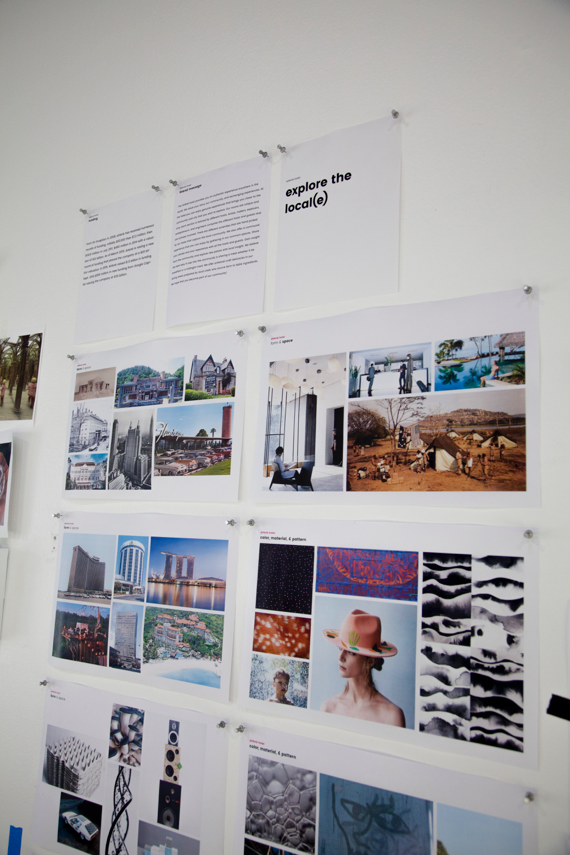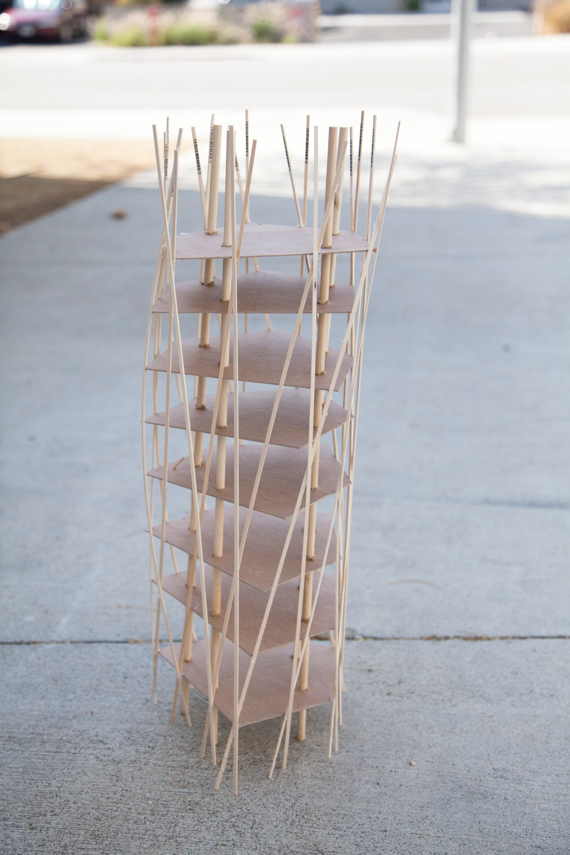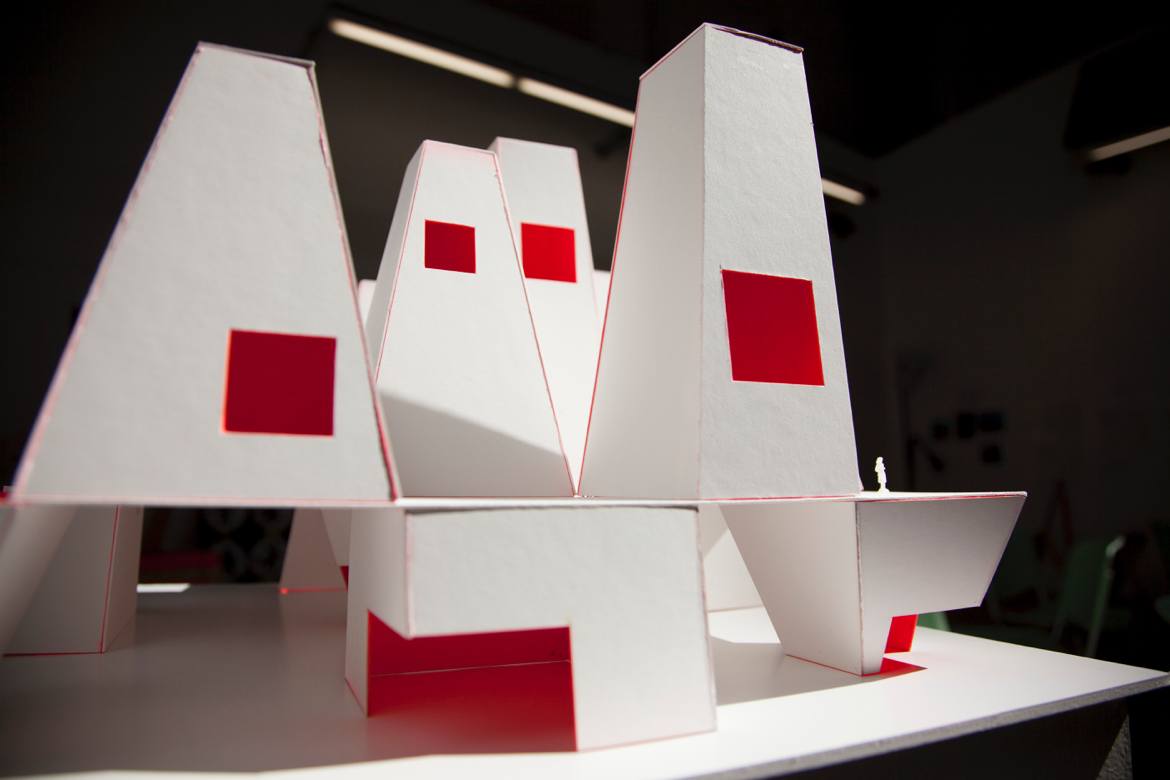

AirBnB Hotel
The AirBnB Hotel is a speculative architectural project that proposes how a digital company, AirBnB, can be represented in a three-dimensional form. It explores how to make digital media visible, tangible, and physical. By creating a tangible artifact for a digital thing, I started to confront some of the issues AirBnB presents as a pervasive mediator that has commodified travel and cultural experiences at home and abroad. The hotel is a purposeful mashup of the irony of creating a hotel out of AirBnB.
Year
2016
Discipline & Research Area
Design Research, Speculative Architecture, Speculative Fiction
Responsibilities
Research, Concept Development, Model Building, Writing, Branding
Research
Research began by investigating the background of the company, the physical characteristics of hotel architecture, analogous spaces, colors, and forms. From its inception in 2008, AirBnB has received numerous rounds of funding. Initially receiving $20,000. Since then they have received 5 more rounds of funding. As of September 2016, they have reached a valuation of $30 billion1. What once started out as a solution to house short-term living quarters in a saturated San Francisco hotel market has grown to a monolithic company that has exceeded the valuation of all other hotel chains globally.




Figure 1: This collection of images and text informed the direction of the design by synthesizing the form, materials, color, and aesthetic into a carefully chosen representation.
As AirBnB positions itself as a unique upstart it has experienced growing pains. AirBnB has dealt with issues such as gentrification, perpetuating hipster style, and failure to pay back taxes. To target millennials, the company positions itself as a facilitator for unique experiences. However, AirBnB has helped perpetuate a sterile aesthetic all across the world2. Mid-century modern furniture, reclaimed wood, Edison bulbs, etc. are the common aesthetic components of AirBnB residences that have helped create a blandness that can be found from Williamsburg, Brooklyn to Bangkok, Thailand.
AirBnB has created a global market for the sharing economy. Users can travel and explore new cities and countries in rooms, apartments, and homes all across the world. It has allowed for more individuals to travel and allowed individuals to make additional income for renting out a room or apartment. AirBnB has subverted the traditional hotel industry.
In addition to the research, I created a speculative brand tagline and informational campaign for the imaginary hotel. The writing helped inform the conceptual direction of the physical form. The tagline: Explore the local(e).
Analogic &
Interpretative Models
Both models were quick studies that gave form to AirBnB. For the analogic model, I was limited to materials found in a hardware store. The idea was to quickly give form with existing materials and to develop a conceptual framework to work with. I was able to use materials from an art store for the interpretative model.
Analogic Model
The analogic model investigated the facade that AirBnB has created. Seemingly, AirBnB is a transparent and open company, but in reality, they are not as open and mindful as they appear. The mesh used in the model endeavors to capture this sentiment.


Figure 2: The analogic model was made quickly to sketch out possible ideas such as feigned transparency.
Intrepretative Model
In the interpretative model, I played with the idea of transformation which translated in rotating the floor plan of each level to create a twisted form. The floor plan is represented by the iconic outline of a house, but only visible to the residents who inhabit the space. Moving forward I evolved the formal structure, but instead captured the essence of the conceptual strengths of the analogic and interpretative models.




Figure 3: The interpretative model took it one step further by critiquing the replicated experiences of AirBnB homes by slightly rotating the floor plan.
Design
The hotel's physical model echoes the pervasive business model of AirBnB. The company has quickly changed the landscape of the hotel industry and has become a serious threat to the industry. The hotel is constructed as a series of modular units varying in height and size serving as the building block for the expansive hotel. In its current physical form, the hotel represents a small section of an ever-growing hotel. There are no limits to the physical landscape that the hotel could occupy echoing how AirBnB is growing online and crossing over into other markets such as trip planning (AirBnB experiences). By viewing their growth through an architectural form, viewers can start to acknowledge the company's influence and impact on the industry that they have disrupted.
The form changed quite drastically from the analogic and interpretative models but the similar conceptual ideas of repetition and rigidity remained.


Each modular unit in the hotel is only slightly different from its neighbor and the endless repetition of the form imitates the aesthetic repetition found in AirBnB homes. The modular components vary in height. The cutout shapes also vary in size to either indicate an entrance or window. The rhythm created by the different elements undergo acts of transformation as each modular component is rotated in different axes. The lobby of the building allows for travelers and hosts to share their experiences as well as serving as an entry point to access the different vertical spaces. Indistinguishable experiences and dull hotel spaces fail to honor the uniqueness and diversity of AirBnB’s user base. The repeated forms echo the almost identical AirBnB apartments and homes. Viewers can start to reconsider what the actual experience of staying in AirBnBs are like and how these experiences are increasingly homogenized.
The hotel depicts AirBnB's polite and respectful corporate culture while revealing their goal of dominating the hotel industry and continually perpetuating the same bland style all across the world. This is displayed through the use of white and fluorescent red emanating from the interior of the building.
Reflection
The deliberately juxtaposed programs (AirBnB as a hotel) facilitated interesting and constructive explorations in the short timespan. The AirBnB hotel also incorporated many of the elements that I intended such as repetition, transformation, and expansion.
By creating a tangible structure for a concept that is rooted in the digital world was a very valuable exercise for me. I believe that there is value in translating an abstract idea into a tangible form. It allowed me to work through the problem space that had measurable outcomes.
Notes
1. https://www.bloomberg.com/news/articles/2016-11-14/morgan-stanley-airbnb-s-threat-to-hotels-is-only-getting-sharper
2. http://www.theverge.com/2016/8/3/12325104/airbnb-aesthetic-global-minimalism-startup-gentrification
© Jason Wong. All Rights Reserved.


